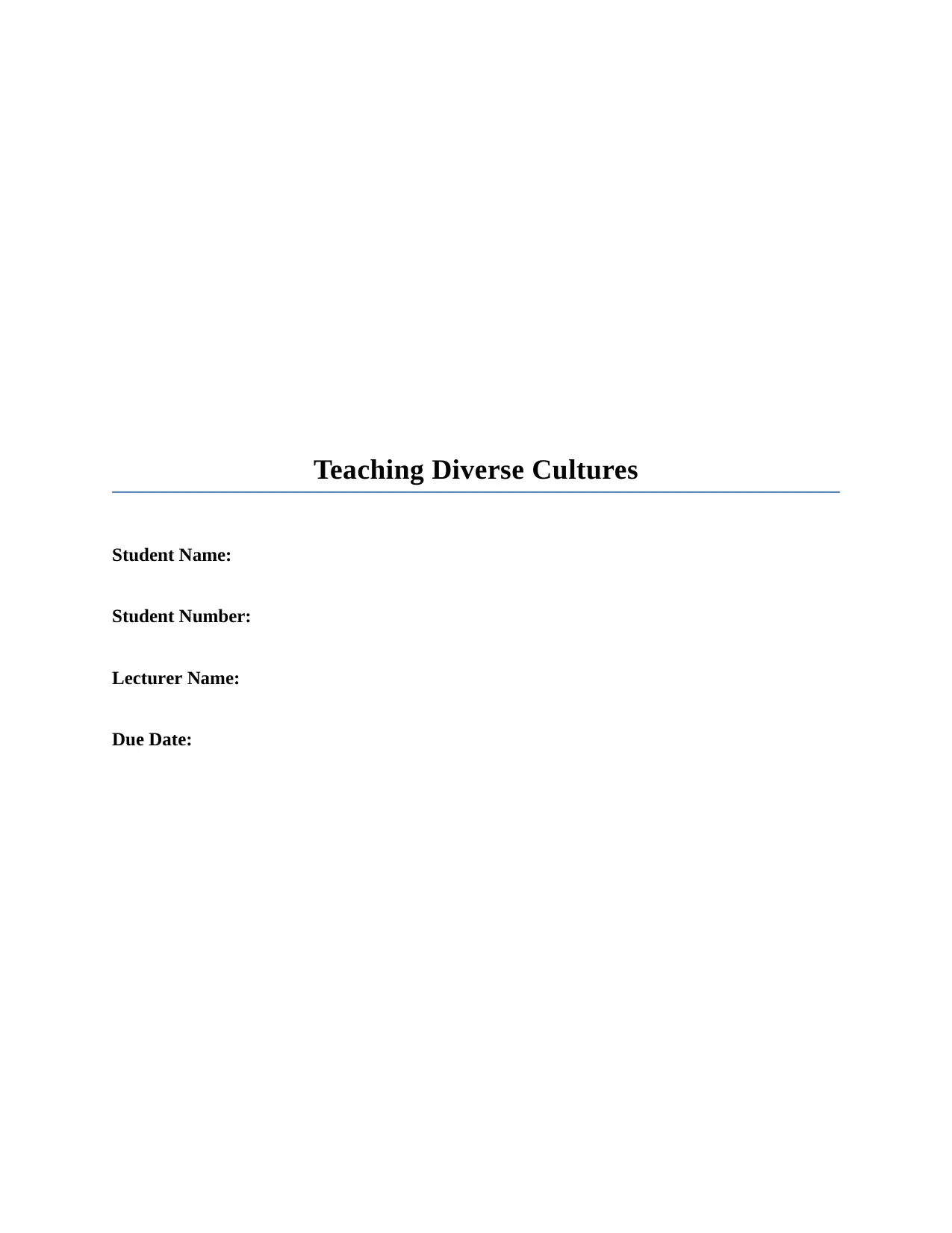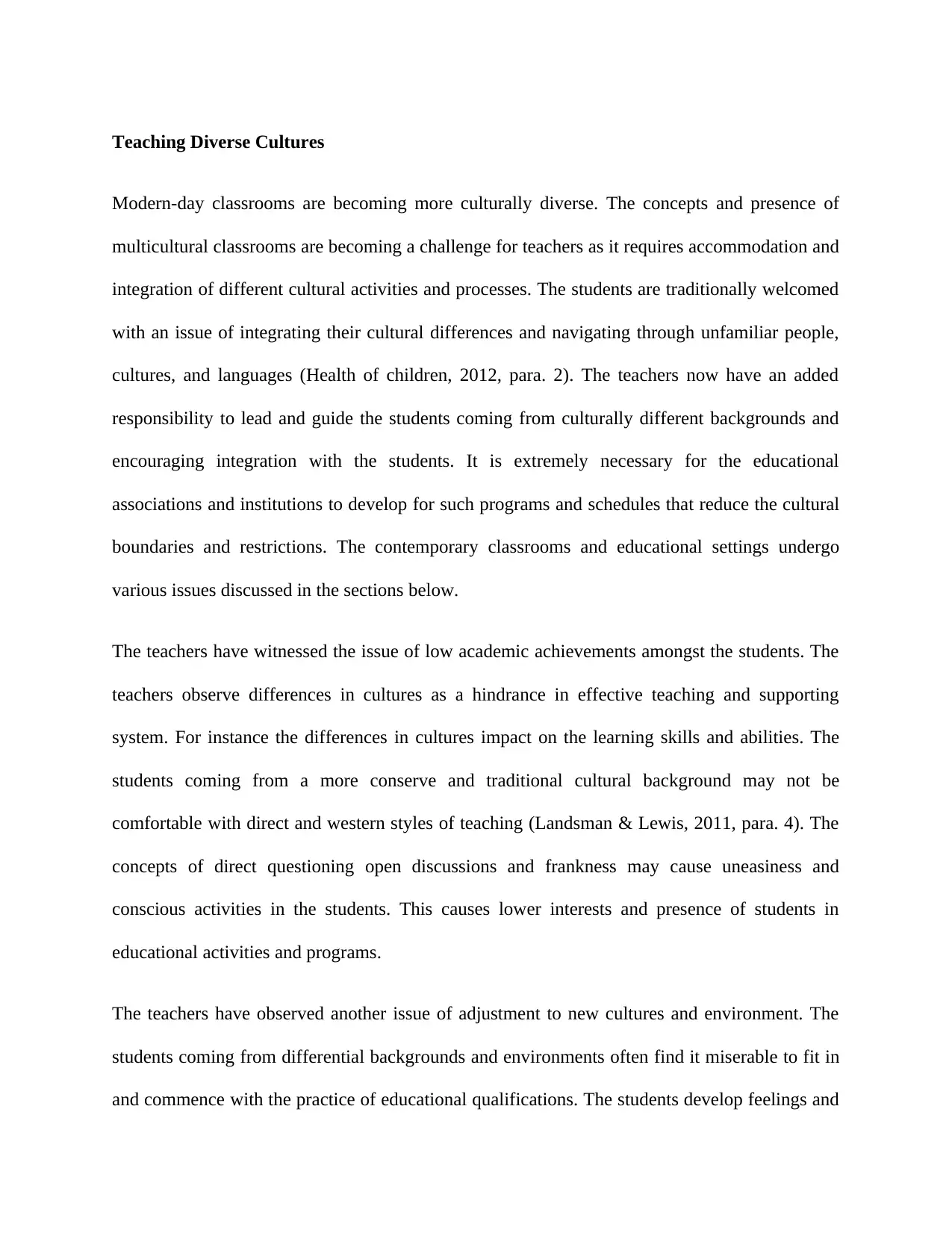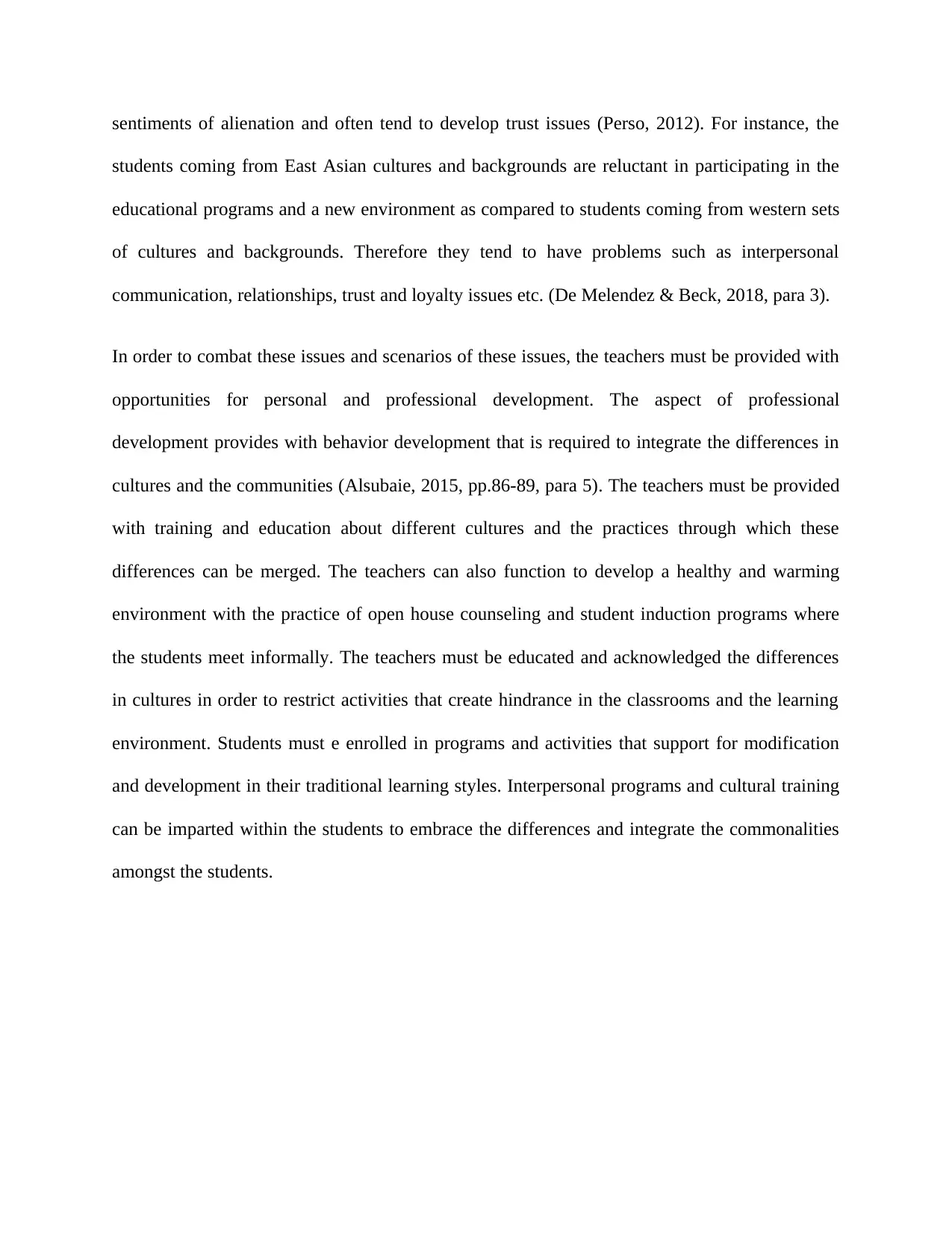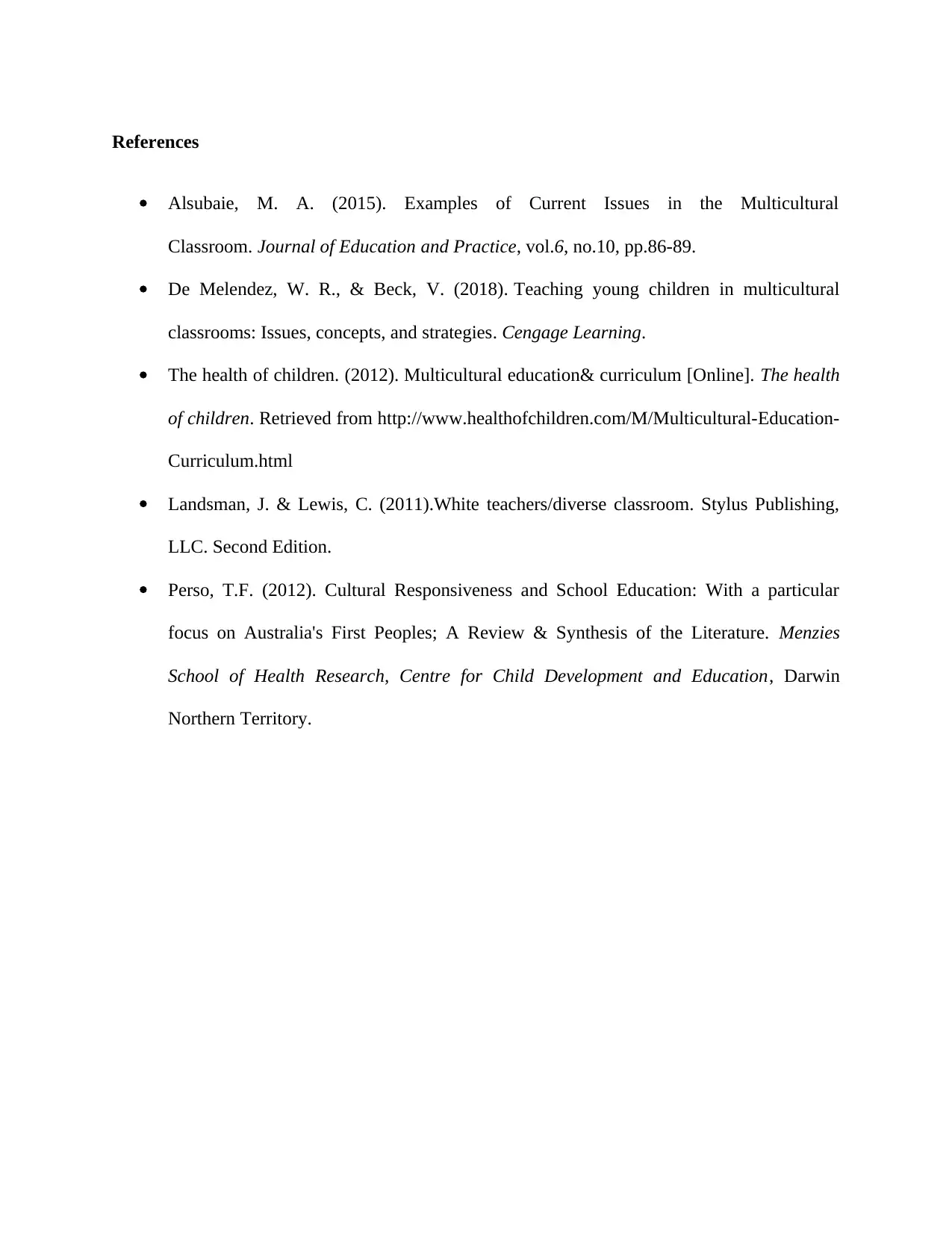Strategies for Teachers in Multicultural Classrooms: Diverse Cultures
VerifiedAdded on 2024/05/14
|4
|735
|309
Essay
AI Summary
This essay addresses the challenges and strategies involved in teaching diverse cultures in modern classrooms. It highlights issues such as low academic achievement and adjustment difficulties faced by students from different cultural backgrounds. The essay emphasizes the importance of professional development for teachers to integrate cultural differences effectively. It suggests training and education about diverse cultures, open-house counseling, and student induction programs to foster a healthy learning environment. The essay also recommends programs that support the modification of traditional learning styles and interpersonal programs to promote cultural integration among students. Desklib offers a variety of resources for students and educators, including solved assignments and past papers related to teaching and cultural diversity.
1 out of 4










![[object Object]](/_next/static/media/star-bottom.7253800d.svg)